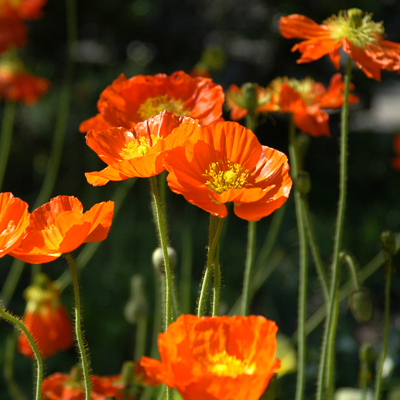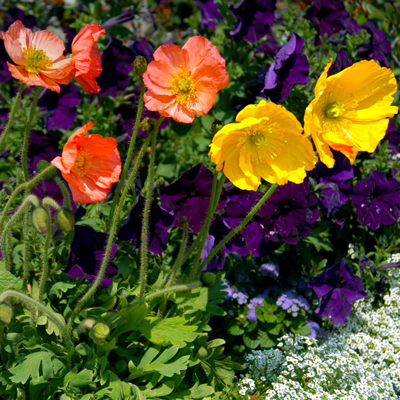Poppy Time for Texas
I saw Iceland poppies for the first time probably 35 years ago. I knew that I wanted to grow them in the Sperry home gardens, and the next time I saw transplants available, I grabbed a couple of flats and planted them by dark.

It amazes me that you don’t see Iceland poppies being used in Texas landscapes any more often. I guess it’s because pansies are so dependable and perhaps a little bit easier. They’re also more compact. Poppies are taller and they don’t fit into as many spaces. But still, for their bright, cheerful colors, these lovely blooms that bob in the breezes deserve more spots in our gardens.
Here are the particulars…
If you search for information online, you need to check the location of your sources. People write about this plant from all over the world. Whether it’s treated as an annual or perennial, whether it’s planted in fall or spring, and how you care for it will all depend on the place where the author calls home.
I’m going to give you advice based on my experiences with Iceland poppies in Texas.
Iceland poppy (Papaver nudicaule)
Annual flower for us. Best planted either in fall in South Texas or early spring (now) in North Texas.

Flowers are single or semi-double in shades of orange, yellow, pink, white. 3 inches across. Someone described them as looking like pieces of stained glass, and I think that’s accurate.
Full sun is best. Good drainage is essential. Highly organic soil is a requirement, so incorporate several inches of compost, sphagnum peat moss, well-rotted manure and finely ground pine bark mulch.

Grows to 16 to 20 inches tall. Space plants 12 to 15 inches apart in beds.
I prefer 4-inch or quart-sized potted transplants.
Also well suited for use in large patio pots.
Fertilize every couple of weeks with water-soluble, high-nitrogen fertilizer to keep plants growing vigorously.
Keep soil uniformly moist. Do not allow plants to dry to the point of wilting.
Deadhead to remove old flowers daily. Allowing seedpods to form will greatly slow production of additional flower buds.
